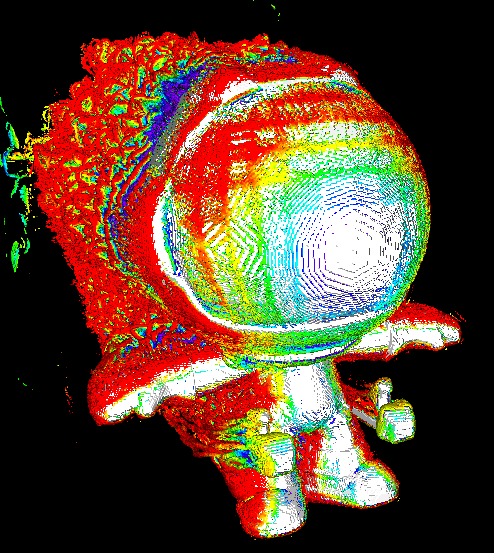

I agree, you can use an old desktop, laptop, or if you don’t have something I had good luck with the local university surplus store.
e


I agree, you can use an old desktop, laptop, or if you don’t have something I had good luck with the local university surplus store.


Harris was less than 2% behind, and Clinton was ahead in the popular vote. I don’t think gender was not a factor, but I also don’t think it was a major one.


Blahaj.zone is an instance aimed at queer people, but it doesn’t have to prevent non-queer people from participating. I would imagine an instance aimed at women to be similar.
If you’ve seen that blue-ness in the sky you’ve seen air.


Just scoot forwards a bit?


That’s interesting, I can see both circles but my hand does always go to my right eye unless I force myself to look at the other. That makes sense I guess because my right eye is more focused at a distance. I wonder if that switches though when I look at something close up for a while, because my left eye is more focused then.


I’m kind of weird I think in that I can focus further away than something I’m looking at, but I can’t focus closer than something I’m looking at. At the same time though I can cross my eyes to converge closer, but can’t push them apart to converge further away.


I know some people are suspicious of fedora specifically because of its ties with IBM.


Arch also can absolutely be installed just as quickly as any other distro if you use the archinstall script. I used it recently to install KDE plasma onto a Chromebook from 2017 and everything worked exactly as expected, I haven’t had any issues with stability so far. Can absolutely be done in under half an hour. It ofc doesn’t come with the advantage of understanding exactly how your system is set up, like you would if you did it yourself.
The last time I did that (slightly different setup with xfce) though I broke it somehow and ended up with if freezing often when booting, although I’m still not sure if that was a hardware problem or not, but it doesn’t seem to be happening anymore. I also broke something with the audio jack somehow around then during an update, but chromebooks have weird audio drivers and you need to use this script maintained by (afaik) one person in their spare time. Anyways I would expect a framework laptop to handle it better as it’s newer and more common hardware.


I’ve seen people posting screenshots of them asking for money. It definitely was that sort of scam.


I think it’s fine to have some less commonly used actions be only accessible through a terminal, even on more user-friendly distros. That is basically what Minecraft does, and yet no one’s scared of that.


It dissolves in water, so you can also just let things soak for a while. Glue stick is made of the same polymer that people use to print dissolvable support material.


Glue stick washes off in about 30 seconds. I wouldn’t want to use it all the time, but for just 1 part it won’t inconvenience you very much.


The ti-84 plus is based on the zilog z80. From 1976. The calculator is still being made, and still costs $100.


Better calculators just use floating point math with a few tricks on top to pretend it isn’t floating point math.
I was thinking about this a bit yesterday and I think the most feasible way would be to suspend a glass sheet above the lake, and then give people harnesses with magnets on the top that attach to magnets on the other side of the glass sheet. Then just put ball bearings on both sides to reduce friction.
You could try to use magnetism or something tho, although that means you’d only be able to walk on specially prepared lakes
Unless there’s force coming from somewhere other than buoyancy, you can’t get better than than 1.29 kg per cubic meter of lift in air at stp.
I agree, I think generative AI is insanely cool technology (and if a new local one comes out I’ll probably play with it for a bit) but I can’t see image generation at least ever being a net positive for humanity until we get some sort of welfare state.
Currently the negative effects are mitigated by it being relatively easy to tell ai images apart from real images, and since ai images take almost no effort to make, they have naturally become an instant sign marking low effort content wherever they are used. When people stop being able to tell ai images apart is when it will start to become a problem.
Linux is between the requirements of a raspberry pi pico and a raspberry pi zero I would say
Although some crazy person did get Linux running on an esp32 once